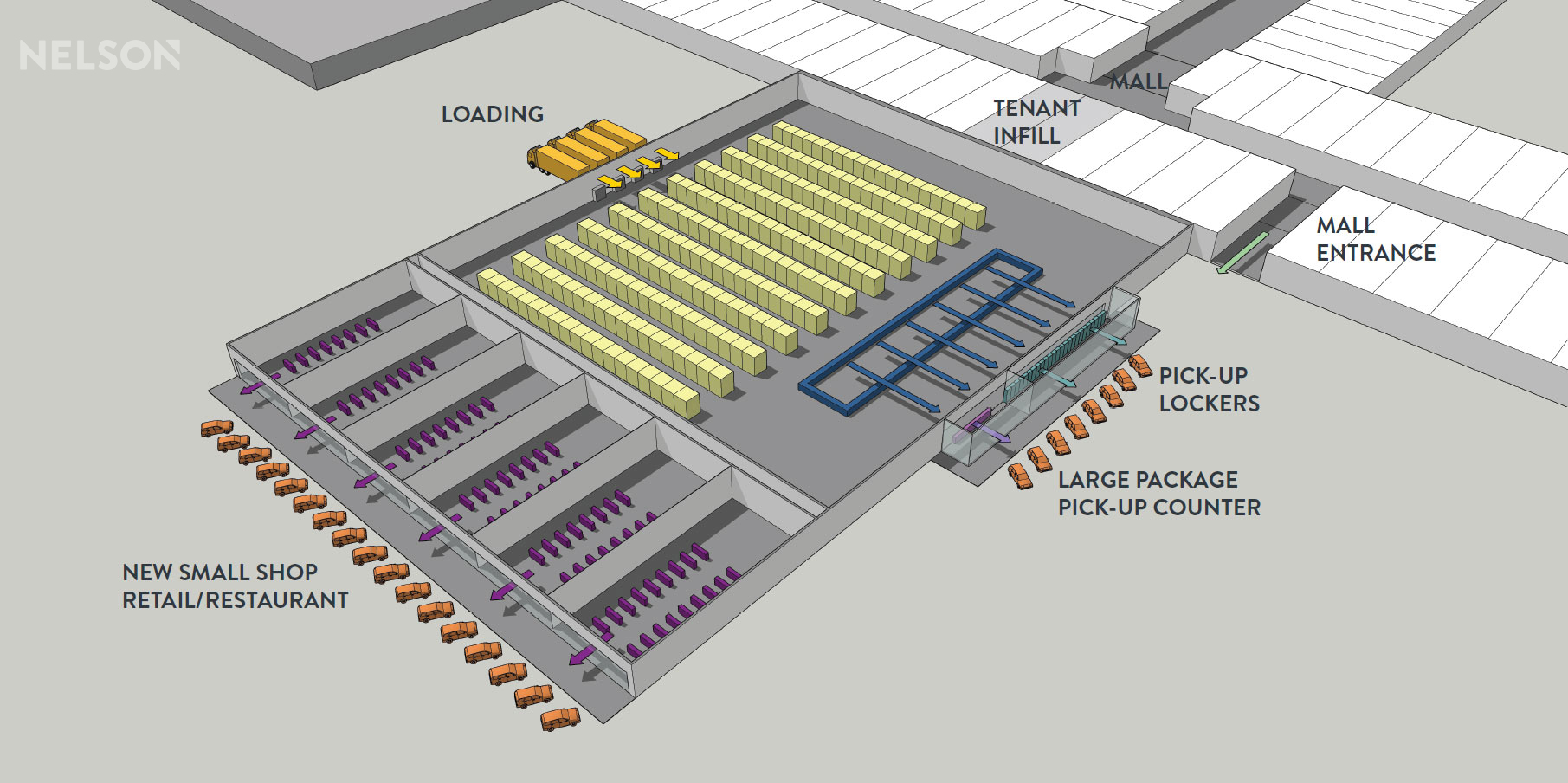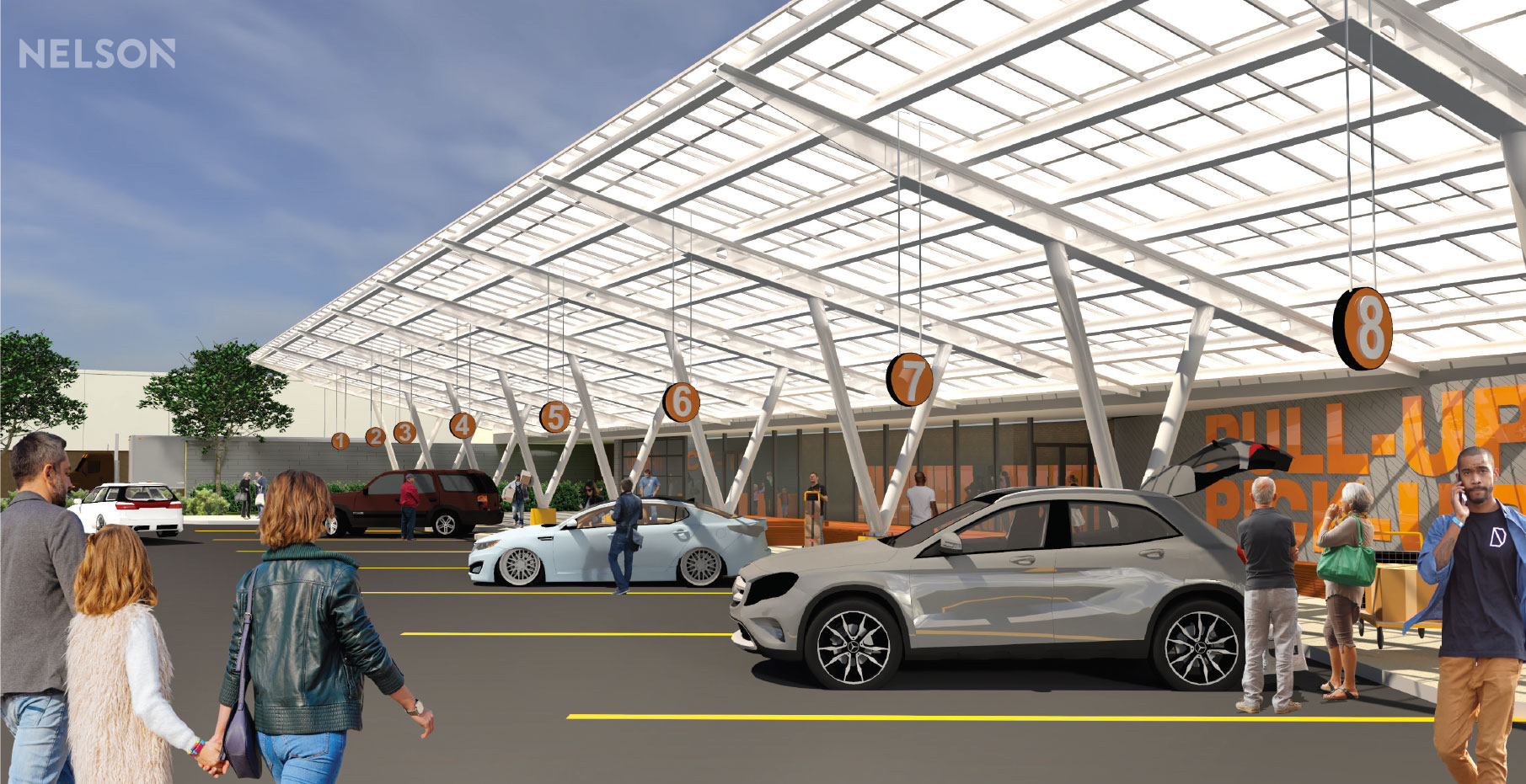Last month, one of the world's most well-known retailers filed for bankruptcy. Barneys is almost 100 years old and will close 15 of its 22 stores as part of a major restructure, and they aren’t alone. Barneys is among dozens of other retailers filing for bankruptcy this year. The question is, how do landlords transform this valuable empty space? The solution lies in repurposing existing square footage.
Brick-and-mortar environments can no longer offer consumers a singular purpose. Developments must be multi-functional destinations, hybrid facilities that support retail’s changing landscape and benefit the consumer, retailer, and the developer. The goal is to create physical environments that offer both a differentiated customer experience but also one that allows for faster product access.
With a national vacancy rate over 10% and a market that’s inundated with empty anchor space, the challenge will be to repurpose these once thriving mall beacons to become multi-purpose destinations that are both functional and still aesthetically pleasing for developers and remaining anchor tenants. The solution for dark anchors should not be to simply "plug the hole" with traditional solutions, but to look toward "out-of-the-box" concepts. A more innovative distribution center concept can offer a longer-lasting, versatile solution focusing on engagement, helping with supply chain, and better addressing today’s speed of transaction. The ideal repurposed distribution center offers three distinct uses.
First, is a warehouse “lite” facility offering last-mile delivery services – a smaller format transportation hub focusing on last-mile logistics to deliver items to the end user as fast as possible. The repurposed distribution center could leverage key elements from previous anchors, like the loading dock, receiving area and freight elevators. And keeping truck traffic to the backside of the development, ideally with a separate entrance, prevents a disruption to guest traffic flow.
Next, a robust click-and-collect facility, from parcel lockers to drive-through pick-ups, it will allow customers, as well as third-party delivery vendors, faster access to merchandise. This could also support newer concepts like cloud kitchens that rely on multiple delivery providers and a seamless pick-up process. Supporting new business-models from BOPIS to ridesharing, will keep the concept fresh and flexible, to support the growing ecommerce market.
 One solution for dark anchors is to convert them to warehouse “lite” facilities, which offer last-mile delivery services. The repurposed distribution center could leverage key elements from previous anchors, like the loading dock, receiving area and freight elevators. Rendering: NELSON
One solution for dark anchors is to convert them to warehouse “lite” facilities, which offer last-mile delivery services. The repurposed distribution center could leverage key elements from previous anchors, like the loading dock, receiving area and freight elevators. Rendering: NELSON
The third and final usage will be to leverage the street-facing facade for new, small format retail and restaurants. Providing unique localized offerings and a varied tenant mix will keep the development feeling current. These new consumer-facing environments should offer plenty of opportunities for consumer engagement and provide a new draw for legacy tenants within the development.
The refreshed exterior will help increase street traffic while creating an aesthetically pleasing façade to the much-needed back-of-house functions within the warehouse and click-and-collect environments. The small-format footprint could entice new offerings from start-ups to online-first retailers, providing developers and guests an elevated and differentiated experience.
This multi-faceted concept could support various industries beyond just traditional retail, such as breweries, beer distributers, and a consumer-facing beer garden or tasting room. With the rise of farm-to-table dining, it could be home to a grow house, farmers market, and signature-chef restaurant. Or even provide a footprint for cloud kitchens, a food truck park, and designated pick-up for food delivery apps. The options are endless when the concept supports consumers, ecommerce and supply chain.
Related content: In the age of Amazon there's nowhere to go but up
Moreover, many of today’s anchor spaces are large, unarticulated boxes that do not address today’s consumer needs and wants. The architecture is often forgettable and many of the exteriors haven’t been renovated since the original tenant opened their doors. This strategy may have been appropriate when most shopping centers were inward facing, enclosed malls, but today’s shoppers are looking for differentiated environments that not only speak to their unique communities, but also support their online habits to offer a more seamless, convenient experience.
So, while shopping centers have been turning inside out, replacing long stretches of back of house exterior walls with engaging outward facing tenant facades, the market has now created an opportunity for anchors to participate in this transformation.
This revolution starts with converting these unarticulated boxes into vibrant offerings that are approachable and engaging. Implementing a hybrid anchor solution provides a win for consumers, retailers, and developers, and will keep the space flexible for innovative new business models and functional for last-mile delivery opportunities. A new concept that merges experience with instant gratification to bring malls into the 21st century.
About the Author
Eric Arter leads the Mixed-Use studio at NELSON where he oversees a multi-disciplinary team serving both domestic and international clients including Simon, Brookfield, Unibail-Rodamco-Westfield, Macerich, Washington Prime Group, Cordish, Lotte and Hyundai Development Company. Eric has over 20 years of experience in mixed-use, retail, office, multifamily, hospitality, restaurant and entertainment projects as well as a background in institutional and industrial projects. Eric’s comprehensive experience and well-rounded skill set provides a unique understanding in support of a collaborative project approach. Projects in which he has played a key role have been the recipient of many awards throughout his career including: AIA Design & Honor Awards, NAIOP Awards and design competitions. Eric earned his Bachelor of Architecture degree from the University of Cincinnati. He is a registered architect, a member of the AIA, ICSC and he is a LEED accredited professional.
Related Stories
| Aug 11, 2010
Florida mixed-use complex includes retail, residential
The $325 million Atlantic Plaza II lifestyle center will be built on 8.5 acres in Delray Beach, Fla. Designed by Vander Ploeg & Associates, Boca Raton, the complex will include six buildings ranging from three to five stories and have 182,000 sf of restaurant and retail space. An additional 106,000 sf of Class A office space and a residential component including 197 apartments, townhouses, ...
| Aug 11, 2010
Glass Wall Systems Open Up Closed Spaces
Sectioning off large open spaces without making everything feel closed off was the challenge faced by two very different projects—one an upscale food market in Napa Valley, the other a corporate office in Southern California. Movable glass wall systems proved to be the solution in both projects.
| Aug 11, 2010
CityCenter Takes Experience Design To New Heights
It's early June, in Las Vegas, which means it's very hot, and I am coming to the end of a hardhat tour of the $9.2 billion CityCenter development, a tour that began in the air-conditioned comfort of the project's immense sales center just off the famed Las Vegas Strip and ended on a rooftop overlooking the largest privately funded development in the U.
| Aug 11, 2010
The softer side of Sears
Built in 1928 as a shining Art Deco beacon for the upper Midwest, the Sears building in Minneapolis—with its 16-story central tower, department store, catalog center, and warehouse—served customers throughout the Twin Cities area for more than 65 years. But as nearby neighborhoods deteriorated and the catalog operation was shut down, by 1994 the once-grand structure was reduced to ...
| Aug 11, 2010
American Tobacco Project: Turning over a new leaf
As part of a major revitalization of downtown Durham, N.C., locally based Capitol Broadcasting Company decided to transform the American Tobacco Company's derelict 16-acre industrial plant, which symbolized the city for more than a century, into a lively and attractive mixed-use development. Although tearing down and rebuilding the property would have made more economic sense, the greater goal ...







